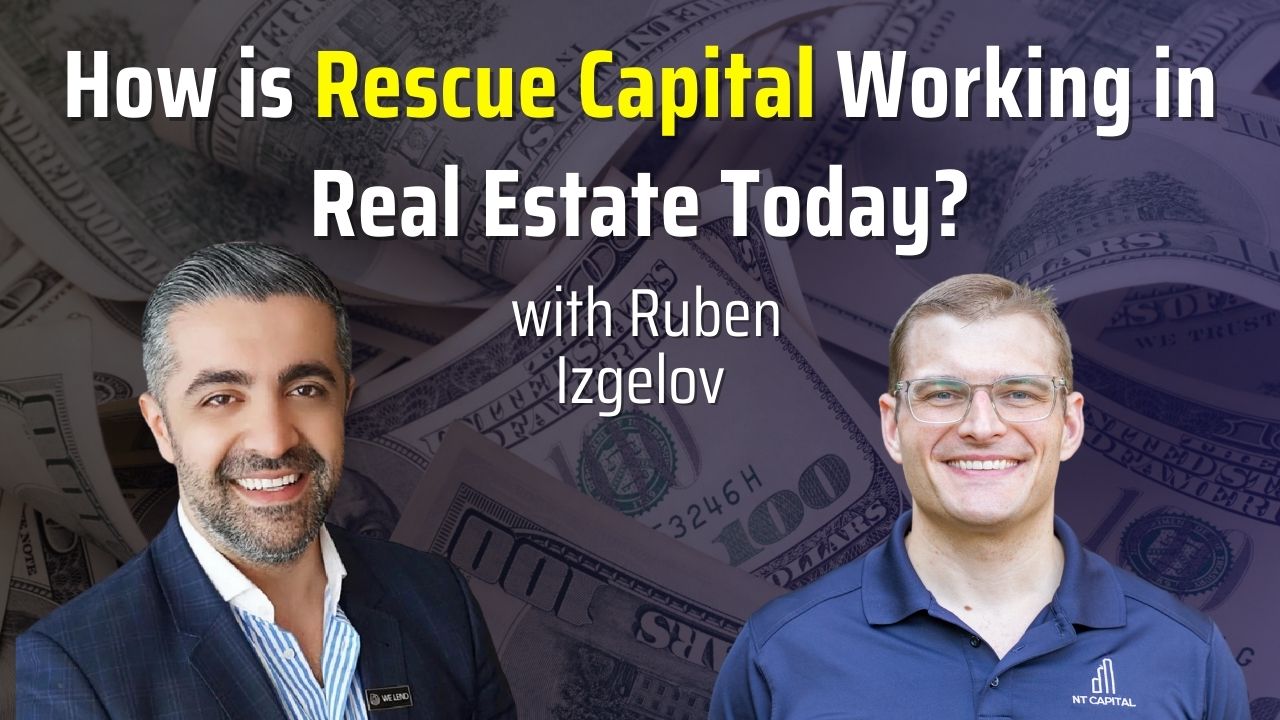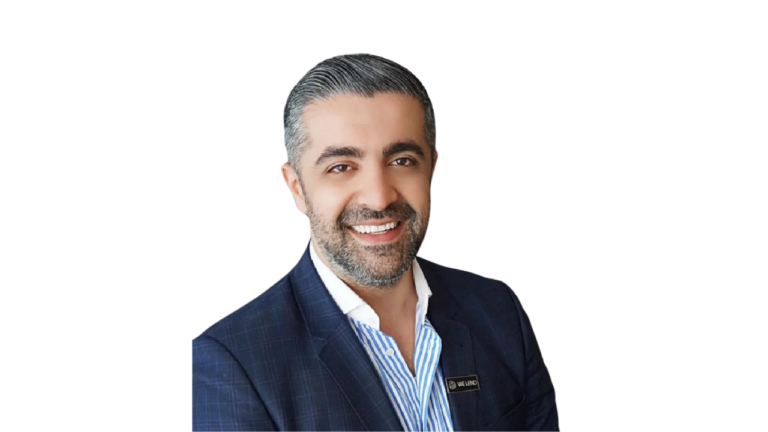
How is Rescue Capital Working in Real Estate Today? with Ruben Izgelov
Today, we have the privilege of speaking with Ruben Izgelov, a professional lender who has made over $500 million in loans to flippers and real estate investors. We’ll be diving deep into the world of rescue capital, exploring how it works, why it’s needed, and the implications it has for the real estate market.
The Basics of Rescue Capital
Rescue capital is a form of financing that comes into play when real estate investors find themselves in a difficult position due to rising interest rates or other financial challenges. It is often used to pay off existing lenders and restructure debt. According to Ruben Izgelov, “These are borrowers that are either in a technical default or a payment default with their existing lender. It could also be a partner dispute, a divorce, or a number of other reasons why they need someone to come in and take out their existing lender.”
When it comes to providing rescue capital, Izgelov’s lending company takes a unique approach. They evaluate the borrower’s experience, creditworthiness, and the as-is value of the property to determine the loan amount. Izgelov explains, “The leverage against the properties as-is value is our biggest risk mitigator. We want to make sure that the borrower can qualify for a takeout loan in the future, so we take a deep dive into their background, credit history, and experience.”
The Role of Technical Defaults
Technical defaults are a common reason why borrowers seek rescue capital. These defaults often occur when a loan reaches its maturity date or when debt service coverage ratios are breached. Izgelov notes, “Most technical defaults are actually maturity defaults. It’s a borrower that had a five-year loan or a 12-month loan that has now matured. They need to take out their existing lender, but for whatever reason, they can’t go to another lender or take on more equity from other investors.”
In these situations, rescue capital can step in to provide the necessary funds to pay off the existing lender and restructure the debt. Izgelov emphasizes the importance of understanding the borrower’s situation, saying, “We always want to understand why the borrower fell into default and what their plans are for getting out of the situation. We take a deep dive into their story and evaluate their ability to qualify for a future loan.”
The Challenges of Pref Equity in Rescue Capital
While there has been some discussion about using preferred equity or mezzanine debt in rescue capital deals, Izgelov’s lending company prefers to pay off the existing lender and become the first lien holder. He explains, “For us, the key is always to be a first lien position lender. It provides us with more certainty and a safer position in the capital stack. We want to mitigate our risk and ensure that we can recover our investment if necessary.”
The challenge with using preferred equity in rescue capital deals is that the existing equity may already be severely diminished or nonexistent. Izgelov states, “If a borrower has taken on high leverage and their equity in the deal is minimal, they may be more likely to walk away from the property. It’s difficult to structure a deal when there is negative equity involved.”
Foreclosures as a Last Resort
Foreclosures are often seen as a last resort in the rescue capital process. Izgelov explains, “The more equity the borrower has in the deal, the more likely they are to pay off the loan. If a foreclosure is initiated and the borrower has at least 25% to 30% equity in the property, they are more likely to find a way to pay off the loan. However, borrowers with minimal equity may be more inclined to let go of the property.”
To mitigate the risk of foreclosures, Izgelov’s lending company focuses on evaluating the borrower’s experience and the as-is value of the property. By ensuring that the borrower has a strong track record and sufficient equity, they can minimize the risk of default and increase the likelihood of loan repayment.
Navigating Rising Interest Rates
One of the challenges in the rescue capital space is the impact of rising interest rates. Izgelov acknowledges that rates have been increasing and that borrowers have become more accepting of higher rates. He states, “Our rates on the fix and flip side are between 11% and 12% now. Borrowers have come to terms with the fact that rates are higher, and they understand that it’s a reflection of the market conditions.”
As a lender, Izgelov’s company has to anticipate future rate increases and ensure that they can offset any potential income loss. He explains, “While our borrowers’ rates are fixed, our rates on the warehouse facilities are not. We have to anticipate rate increases and mitigate the risk by selling loans to institutional buyers. This allows us to compound our money and mitigate future risks.”
Selling Loans on the Secondary Market
Selling loans on the secondary market is a key strategy for Izgelov’s lending company. By selling loans to institutional buyers, they can mitigate their risk and capture a spread on each loan. Izgelov explains, “Whenever we sell a loan, we usually capture about a 1% to 2% spread. If we sell loans once a month, we can capture about a 24% return on our investments.”
The secondary market for fix and flip loans is robust, with institutional buyers showing a strong appetite for these assets. Izgelov notes, “Institutional buyers are bullish on residential properties and believe in the borrowers’ ability to repay the loans. They provide us with an opportunity to compound our money and mitigate future risks.”
The Future of Rescue Capital
Looking ahead, the future of rescue capital is promising. Izgelov’s lending company is exploring the possibility of expanding their rescue capital program and developing relationships with institutional buyers specifically for these types of loans. He states, “We have seen an uptick in demand for rescue capital, and we want to be able to meet that demand. By developing relationships with institutional buyers, we can provide more options for borrowers and further mitigate our risk.”
As interest rates continue to fluctuate and the real estate market evolves, the need for rescue capital is likely to persist. Real estate investors will always face challenges, and having access to rescue capital can be a lifeline in times of financial distress. Izgelov’s lending company is at the forefront of this emerging trend, providing much-needed support to real estate investors and helping them navigate the complexities of the market.
By evaluating borrowers’ experience, creditworthiness, and the as-is value of properties, lenders can mitigate their risk and provide the necessary funds to pay off existing lenders. While challenges exist, such as the limitations of preferred equity and the potential for foreclosures, the future of rescue capital looks promising. As interest rates fluctuate and the market evolves, the demand for rescue capital is likely to increase, and lenders like Izgelov’s company are well-positioned to meet that demand. With a focus on risk mitigation and strategic partnerships, the rescue capital market will continue to play a crucial role in the real estate industry.
About our Guest

Ruben Izgelov
With over a decade in the real estate industry – acquiring, flipping, developing, and financing over $500MM in real estate – Ruben has quickly become a renowned real estate expert, speaker, and guide for many professionals in the industry.
He is the co-founder and managing partner of States Capital (a private real estate debt fund) and We Lend (a private real estate lending platform).
Ruben graduated from St. Johns University and Touro School of Law, earning a BS in legal studies and his JD, finishing cum laude and magna cum laude.





